
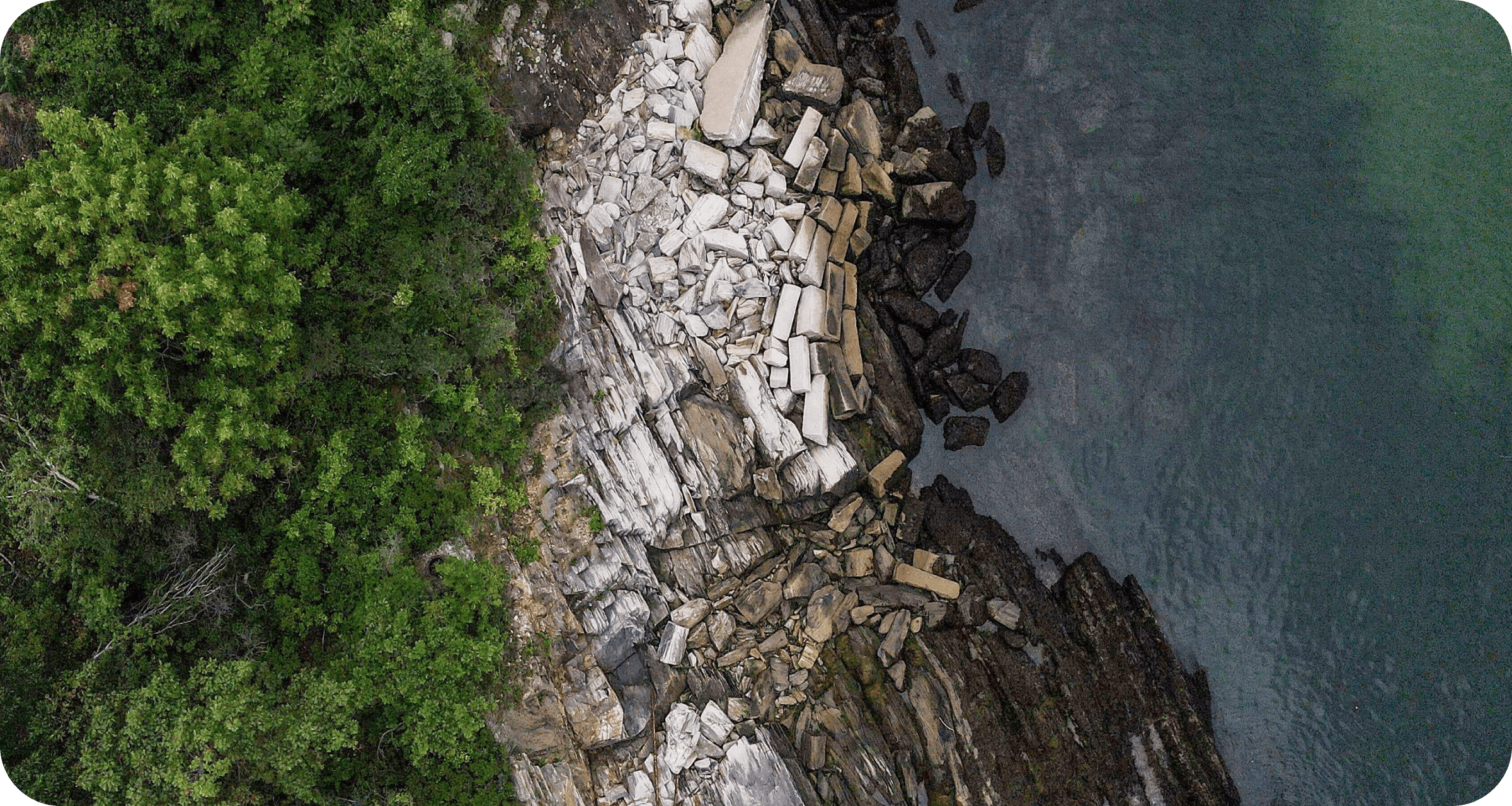
With so many different types of carbon projects out there – from concrete mineralisation to reforestation, and more – it can be overwhelming to decide which to buy carbon credits from.
To make the evaluation process a little easier, we’re publishing a series of project deep dives.
Next up: ocean carbon removal – featuring Running Tide’s multi-pathway system as an example.
Previously we've also explored afforestation, enhanced weathering, and Direct Air Capture.
The deep dive explores:
- What is ocean carbon removal and how does it work?
- How can we enhance natural ocean carbon removal?
- An example of an ocean removal project: how Running Tide’s multi-pathway system amplifies ocean carbon removal
- What makes Running Tide a high-quality carbon project?
Subscribe for the latest insights into driving climate positivity
What is ocean carbon removal?
The ocean is the biggest natural carbon sink we have.
Oceans cover 70% of the Earth, and they’re constantly absorbing carbon in a few different ways:
- Direct absorption: CO2 from the atmosphere is absorbed by water at the surface level of the ocean. Ocean currents mean that the water in the ocean is constantly circulating, so new water is brought to the surface to absorb more CO2 – and the water which has already absorbed CO2 is brought deeper into the ocean.
- Photosynthesis: Carbon is also captured by the plants that grow in the ocean and coastal ecosystems, such as sea grasses, mangroves, seaweed, and salt marshes. These ecosystems grow quickly and are highly efficient at capturing carbon – they remove carbon 20x faster than terrestrial forests, for instance. Protecting, restoring, or growing new ecosystems increases the amount of carbon they can capture and store.
- Marine animals: Phytoplankton that live in the ocean convert CO2 into sugars that feed marine animals; the CO2 is then stored in solid form as carbon in these marine animals, and throughout the continuing marine food chain.
Carbon absorbed via these pathways is initially held in the fast carbon cycle, where it could still be reintroduced back into the atmosphere.
But, once the carbon is transported to the deep ocean, it can be safely stored for the long-term via the slow carbon cycle.
What does that look like in practice?
Ocean carbon removal and the slow carbon cycle
As an example: phytoplankton convert CO2 into sugars, and are often consumed by marine animals. When these animals die, their carcasses sink to the seafloor and take the trapped carbon with them to the depths of the ocean, where it is dissolved back into the deep waters or becomes buried in sediment on the ocean floor – either way, the carbon is locked away for hundreds of years (potentially much, much longer).
This moving of carbon from the fast cycle to storage in the deep ocean (into the slow cycle) also occurs with sources of terrestrial carbon (fallen trees, for example) as well as ocean plants that have drifted from coastal waters.
As humans have added more and more carbon to the fast carbon cycle by burning carbon-rich fossil fuels, the power of the natural carbon cycle is no longer enough to maintain the necessary balance.
This is where ocean carbon removal projects come into play – because if the natural processes of ocean carbon removal can be enhanced, there’s potential for much more carbon to be removed and safely stored for the long-term by the ocean.
How can we enhance ocean carbon removal?
There are many potential ways to enhance the ocean’s natural carbon removal – and we expect to see more and more innovative projects working in this area over the coming years. Existing examples of ocean carbon solutions include:
- Biological: biological carbon removal pathways include sinking terrestrial biomass and/or seaweed to the deep ocean, which locks carbon away in the slow cycle for long periods of time.
- Chemical: adding minerals to the ocean which react with dissolved CO2 and turn it into bicarbonate – such as oceanic enhanced weathering, where finely ground rock is deposited into the ocean. This stores the CO2 safely, and reduces the amount of CO2 in the ocean, meaning it can absorb more CO2 at the surface.
- Electrochemical: methods are currently being explored and developed for the use of electrical currents for direct ocean capture, capturing CO2 directly from the ocean and turning it into a solid form which can be safely stored for the long-term.
Let’s take a closer look at an example of an ocean carbon removal project: Running Tide, which features in Lune’s library of high-quality carbon projects.

Example project: how Running Tide’s multi-pathway system amplifies ocean carbon removal
Running Tide is an ocean health company on the mission to restore ocean health and rebalance the carbon cycle – including amplifying the ocean’s natural processes of carbon removal.
Running Tide deploys buoys which are around the size of a dinner plate, made of terrestrial biomass (e.g. forestry residues from the logging industry, which would otherwise be left to decompose or be burned, releasing the embodied carbon into the atmosphere). This buoy is coated with limestone (or another form of calcium carbonate), seeded with native macroalgae (such as kelp) and deployed into the open ocean. Once deployed, the buoys are distributed by ocean currents, the carbonates dissolve, and the kelp grows. After an optimised period of growth, the system loses buoyancy, and the whole assembly sinks into the deep ocean.
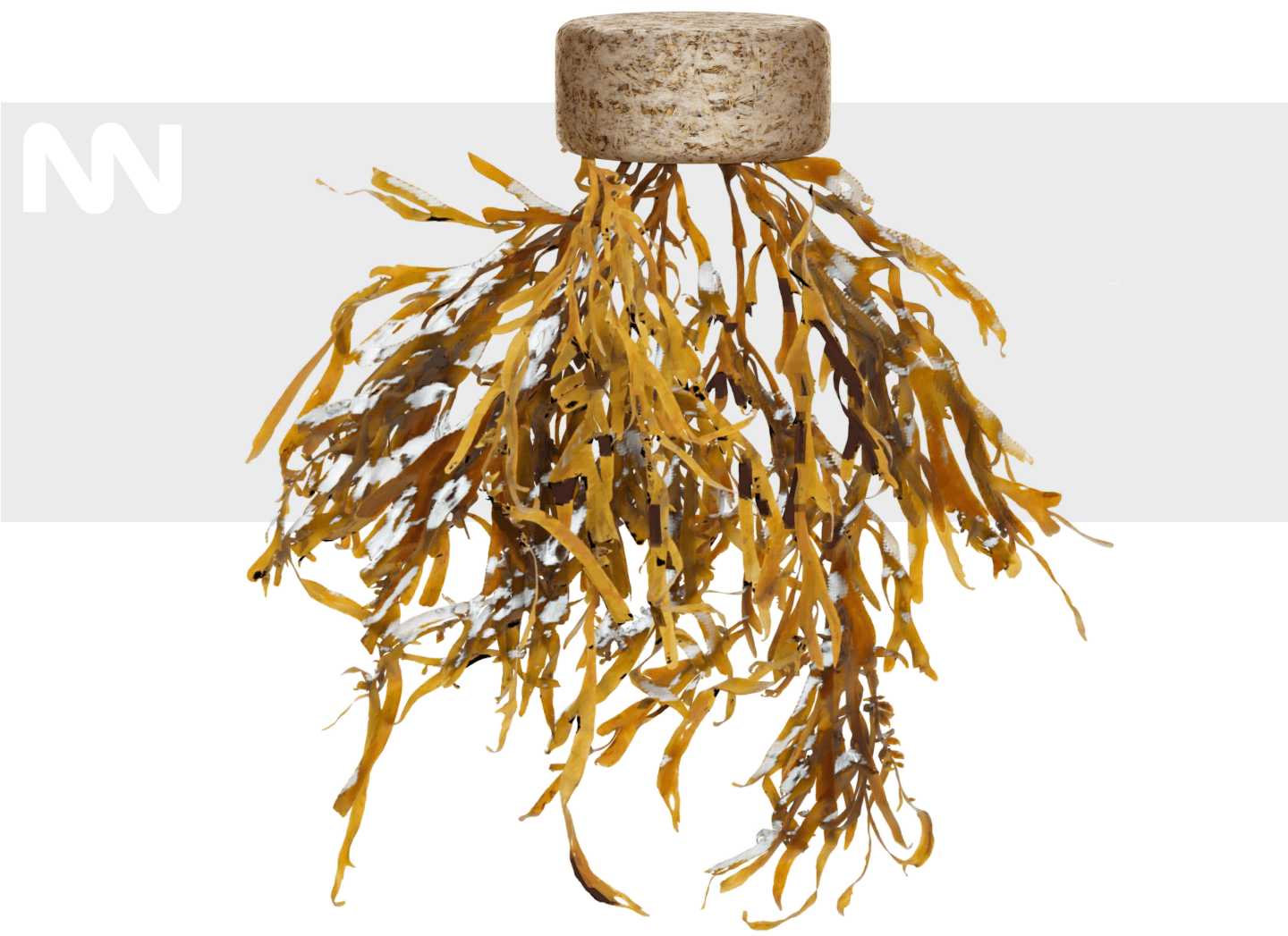 Rendering of a Running Tide carbon buoy, seeded with macroalgae.
Rendering of a Running Tide carbon buoy, seeded with macroalgae.Running Tide’s system amplifies natural ocean carbon removal processes, moving carbon from the fast carbon cycle to long-term storage in the slow carbon cycle in the following manners:
- The terrestrial biomass of the buoy contains embodied carbon. When the buoy assembly sinks, this embodied carbon is stored in the deep ocean, an existing natural process that is part of the ocean’s carbon cycle.
- The calcium carbonate coating on the buoy is a naturally alkaline material, and when it is added to the ocean it enhances the alkalinity of ocean water, combatting ocean acidification and increasing the ocean’s ability to absorb CO2 – further increasing ocean carbon removal.
- Kelp is a fast-growing type of seaweed (or macroalgae) and absorbs a high amount of carbon as it grows. Then, when the buoy sinks, the carbon captured in the kelp is taken to the deep ocean, where it is highly unlikely to be brought back to the surface by ocean currents i.e. it enters the ‘slow carbon cycle’. Therefore, the captured carbon will be safely stored at the ocean floor for at least a thousand years.
Read more about Running Tide’s ocean carbon removal methods in their white paper: Sustainably Amplifying the Natural Carbon Cycle.
 Running Tide's mycelium-coated carbon buoys- made from residual biomass that would otherwise be burned – alongside a variety of ocean life.
Running Tide's mycelium-coated carbon buoys- made from residual biomass that would otherwise be burned – alongside a variety of ocean life.What makes Running Tide a high-quality carbon project?
When evaluating carbon projects to buy carbon credits from, quality should always be your number 1 priority to ensure real impact is made for the planet.
So what makes Running Tide a high-quality project?
Well, there are many factors that contribute to the quality and integrity of Running Tide as a carbon removal project. 4 of the most important are:
- Scientific approach and backing
- Ensuring carbon removal is always durable
- Technology to increase accuracy of measurements
- Co-benefits beyond carbon
All of these factors (amongst others!) contribute to the quality and integrity of Running Tide as a carbon removal project, creating durable and measurable carbon removal which has robust risk mitigation in place.
This is the kind of information you need to be looking for when you do your due diligence on quality – a high-quality project should always have this kind of information about their methodology and approach easily accessible to carbon buyers.
Scientific approach and backing
Running Tide uses the latest peer-reviewed science to inform their approaches to ocean carbon removal – and they’re constantly learning and iterating based on this scientific approach. As their Founder and CEO, Marty Odlin, puts it:

They’ve also partnered with Ocean Visions to convene an independent Scientific Advisory Board of leading subject matter experts, helping to ensure that everything they do uses a rigorous, scientific approach.
And they contribute to science themselves, with their team of internal scientists collecting and analysing data from the project, which can then be shared with the wider scientific community to inform knowledge on the topic.
They’re currently developing a protocol which will detail their approach for quantifying ocean carbon removal. This will be peer-reviewed and will be publicly available – opening their process to external feedback and comment, as well as enabling other similar projects to understand and build on their approach.
Ensuring carbon removal is always durable
Running Tide’s carbon buoys are an inherently durable technique: removing carbon from the atmosphere and permanently storing it in the deep ocean for at least a thousand years – an example of an Oxford Offsetting Principles type 5 project – carbon removal with long-lived storage.
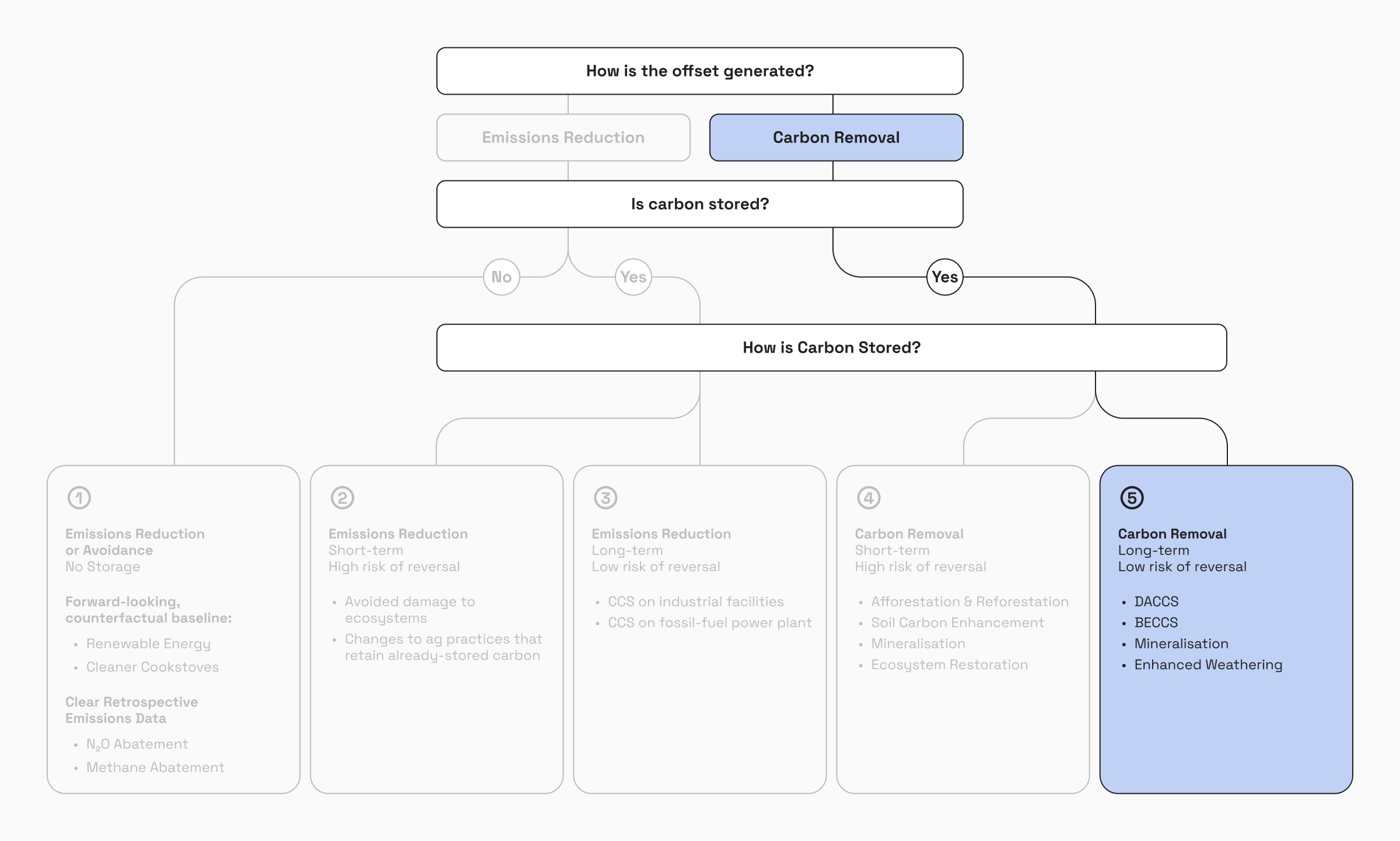
At the same time, the team is also constantly seeking ways to enhance this durability, such as:
- Adding a limestone coating to the buoy not only increases carbon removal, it also increases the likelihood that the buoy will be buried in sediments once it reaches the ocean floor – which will increase the length of the time the carbon remains stored in the depths of the ocean.
- Deployment locations are chosen to maximise durability: ensuring that the buoys will sink at a deep part of the ocean, avoiding competition with existing commercial and biological activities in the ocean.
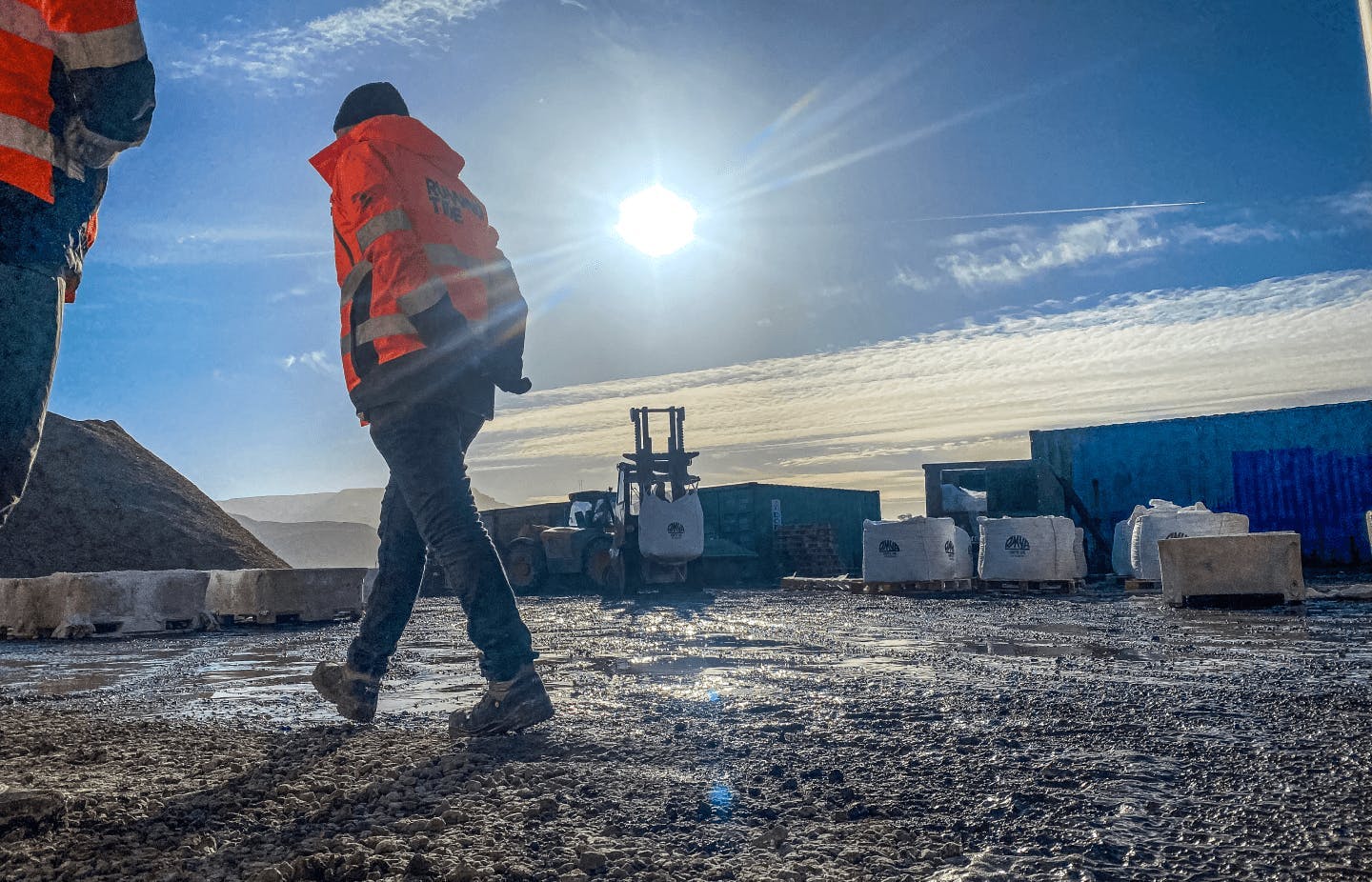 Bags of the calcium carbonate used to coat the Running Tide carbon buoys.
Bags of the calcium carbonate used to coat the Running Tide carbon buoys.Technology to increase accuracy of measurements
Running Tide has technology at the heart of their processes, enabling them to gather accurate data about their carbon buoys even as they disperse across the open ocean. They use sensors to measure data during the duration of the deployment, validating models and testing data, as well as tracking the growth of the kelp.
The accuracy of data is important in any carbon project, because carbon credits are issued based on the estimations of the carbon benefit of the project – in this case, how much carbon Running Tide’s buoys remove once deployed. If this estimation is not accurate, then the actual impact of the carbon credits purchased could be much lower than assumed. Running Tide’s system is designed to gather data with each deployment, not only validating outcomes, but also feeding information back to the system, constantly improving models, and increasing certainty over time.
During deployments, Running Tide’s detailed monitoring systems track buoy locations, deployment dispersion, and a selection of other data points to quantify the carbon removed and build upon the company’s understanding and monitoring of ocean health.
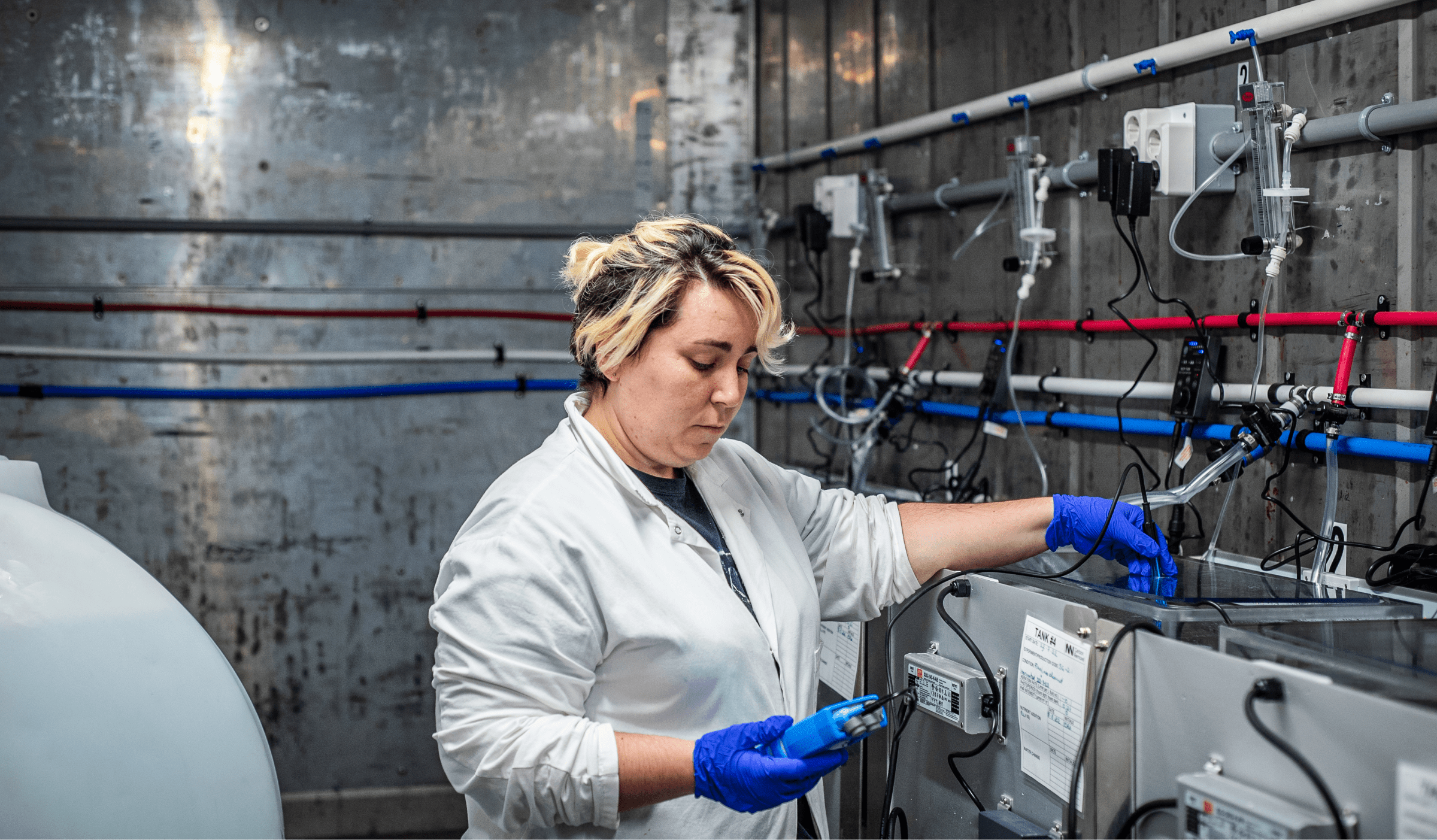 Estrela, a hatchery technician, works in Running Tide's Akranes macroalgae research facility.
Estrela, a hatchery technician, works in Running Tide's Akranes macroalgae research facility.Co-benefits beyond carbon
It’s important that carbon projects also take the wider social and environmental impact of their actions into account – ensuring the project also benefits local communities, and doesn’t cause detrimental effect to local wildlife and ecosystems.
As highlighted previously, Running Tide isn’t just a carbon removal company, they’re focused on ocean health as a whole.

This is clear in how they’ve developed their carbon removal system – the addition of limestone to also combat ocean acidification, for instance.
And to make sure their initiatives never do more harm than good as they scale up operations, they always employ independently reviewed Environmental Impact Assessments to evaluate and assess the potential ecological, economic, and social impacts prior to any planned deployments or and change in the scope of their operations.
By the nature of their business, Running Tide is able to bring economic growth to areas that are often on the forefront of climate change - coastal communities. Much of the work the company does in these communities is applicable to existing marine and maritime skillsets, and Running Tide actively seeks opportunities to connect directly with the coastal communities in their areas of operation. This includes engaging with community leaders, organising town hall meetings, participating in local community events, and enabling feedback mechanisms throughout the cycle of their deployments.
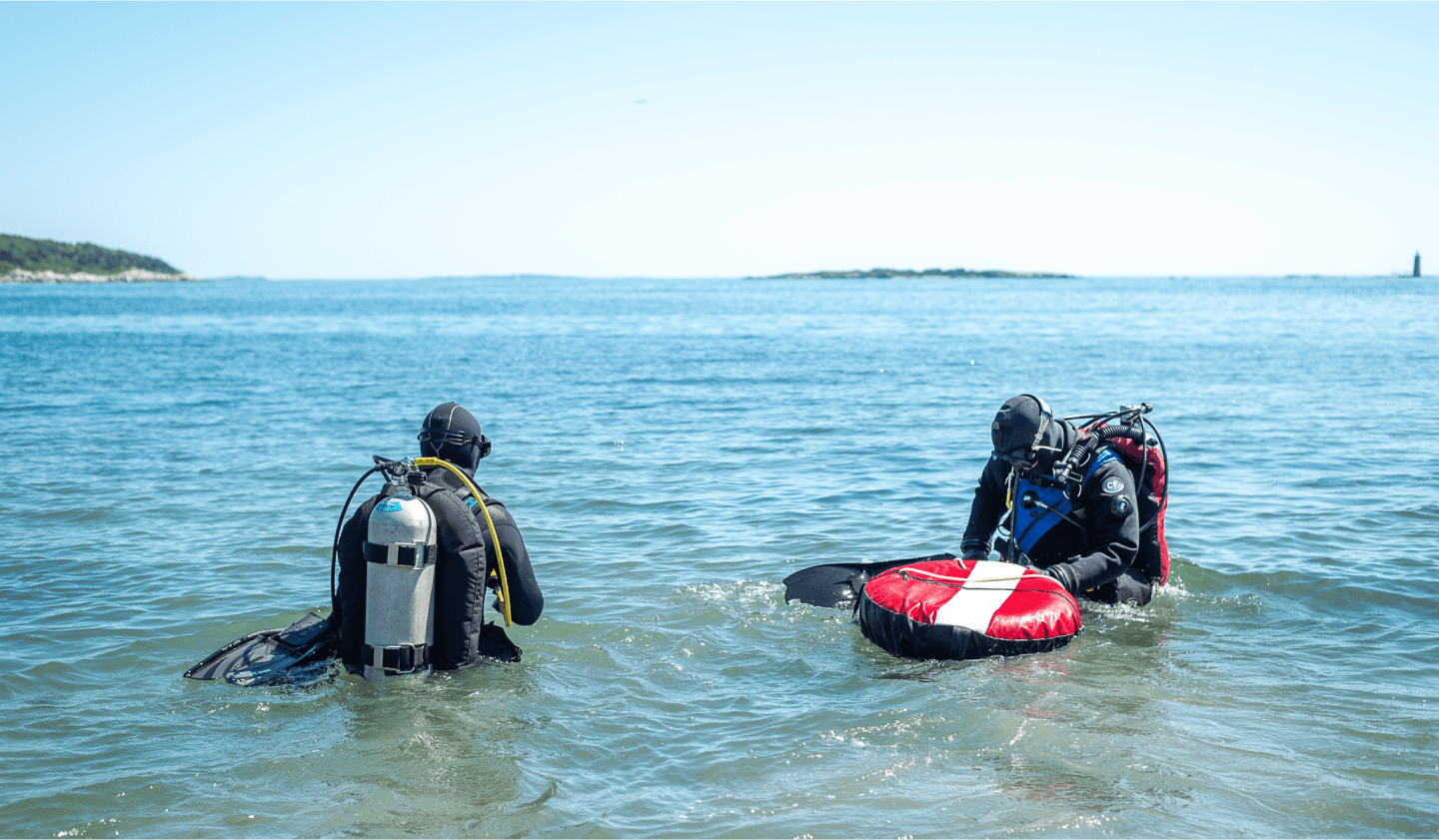 Members of the Running Tide team doing dive work in Maine.
Members of the Running Tide team doing dive work in Maine.A final note on the cost of carbon credits
Finally, it’s important to note that Running Tide is an innovative carbon removal project which is in the fairly early stages of development.
Their techniques have the potential to remove huge amounts of carbon from the fast carbon cycle, and store it safely in the ocean, which requires continual researching, iterating, improving, and scaling up their work. As mentioned, it also fits into the Oxford Offsetting Principles type 5 – a carbon removal project with long-lived storage – which is where the researchers suggest we need to shift our offsetting spending to in the long-term.
This, combined with the markers of quality outlined above, make Running Tide a high impact project to fund if you really want to make a difference on climate change.
Running Tide credits are currently listed on Lune’s dashboard at around $250 per ton. To understand this price, it’s important to keep in mind that moving carbon to long-term storage in the slow cycle is a fundamentally demanding mass-moving endeavor. In addition, Running Tide is investing heavily in research and development for their novel approach, which has the potential for gigaton-scale removal.
A higher price point can sometimes put businesses off buying carbon credits from innovative carbon removal projects. But omitting carbon removal from your portfolio can mean compromising on the positive impact your business can have.
That’s why we recommend that businesses create a portfolio of carbon projects that balance cost and impact, or explore contribution rather than compensation. Read more on this in our article: $500 vs $5 carbon credits – why does cost vary so much in carbon offsetting? and get in touch if you’d like to further discuss building an offsetting portfolio which includes Running Tide’s ocean carbon removal project.
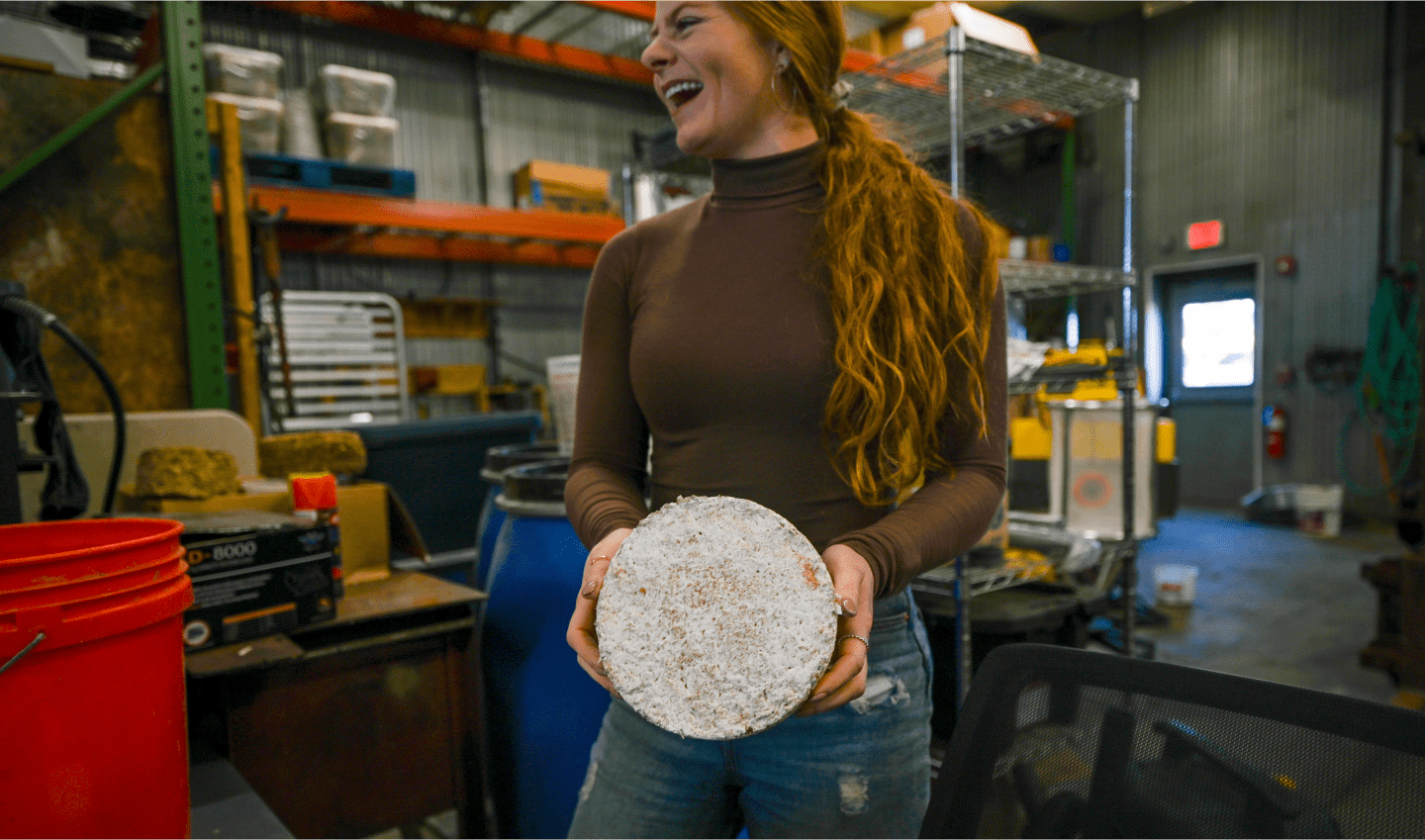 Colby, a substrate technician, holds one version of Running Tide's carbon buoy.
Colby, a substrate technician, holds one version of Running Tide's carbon buoy.Next steps
To find out more about Running Tide, explore our full library of projects, and purchase high-quality carbon offsets, log-in or sign-up to the Lune dashboard. Or, if you’d like to discuss how to build an offsetting portfolio which includes Running Tide’s ocean carbon removal project, get in touch with the team first – we’d love to chat.
Plus, if you're curious about our own evaluation process for the carbon projects we include in our library at Lune, take a look at our guide.
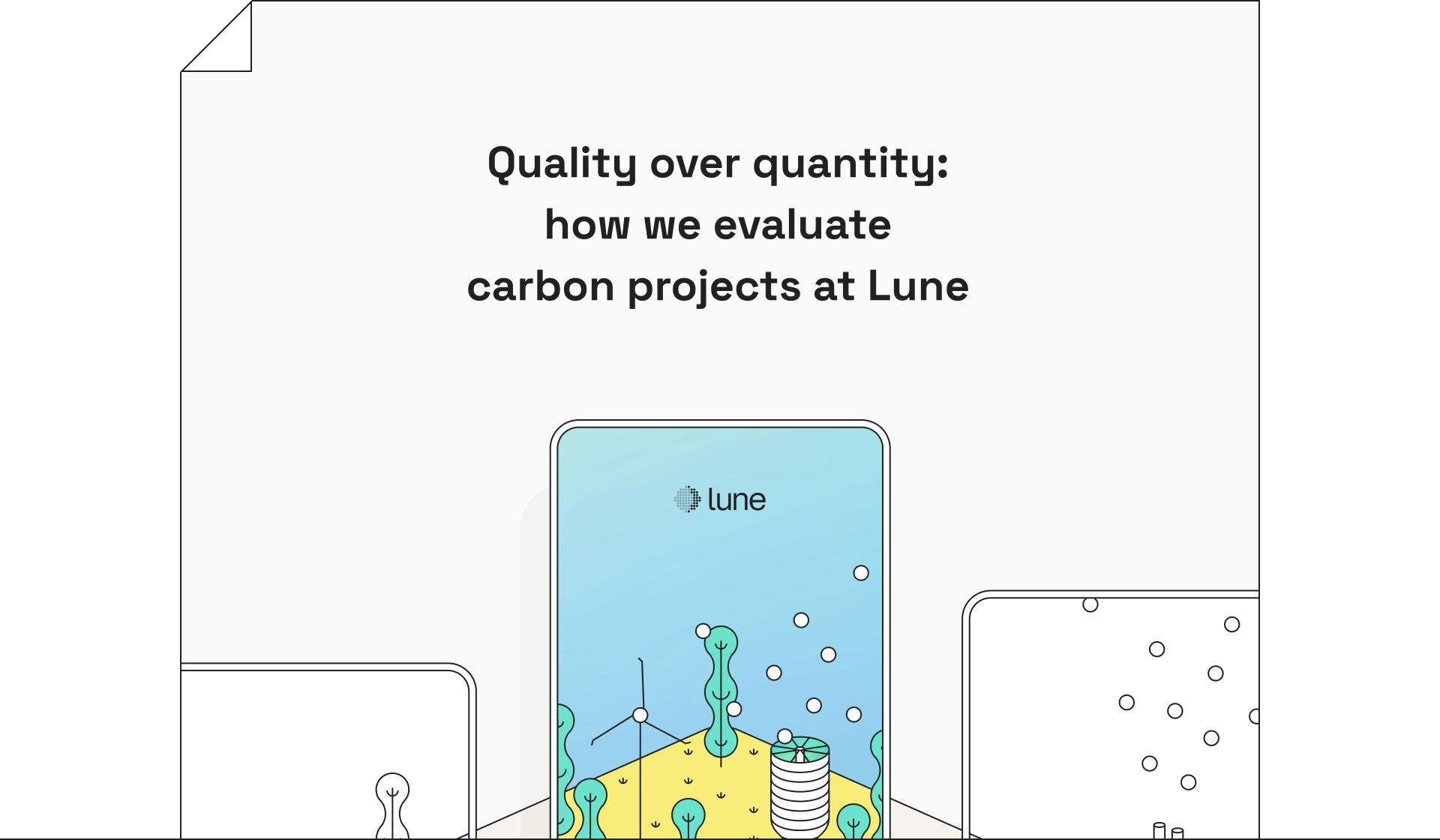
Readers also liked
Readers also liked

Subscribe for emissions intelligence insights
Get the latest updates in the world of carbon tracking, accounting, reporting, and offsetting direct to your inbox.


